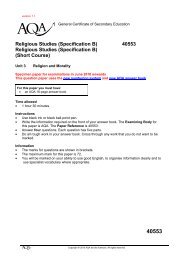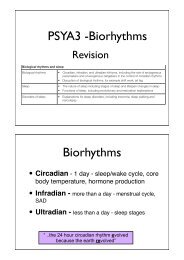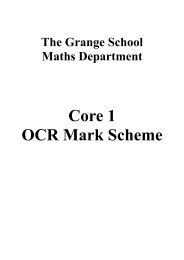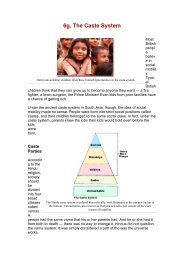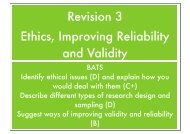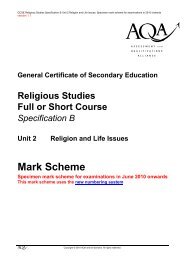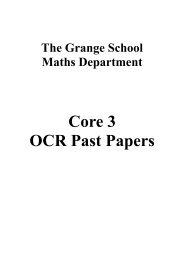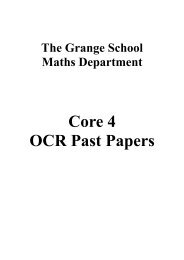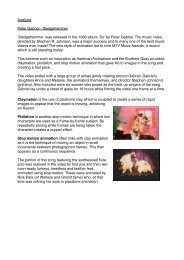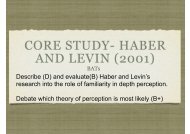C2 Past Paper Booklet - The Grange School Blogs
C2 Past Paper Booklet - The Grange School Blogs
C2 Past Paper Booklet - The Grange School Blogs
Create successful ePaper yourself
Turn your PDF publications into a flip-book with our unique Google optimized e-Paper software.
Jan 201121 (i) Find and simplify the first three terms, in ascending powers of x, in the binomial expansion of(1 + 2x) 7 . [3](ii) Hence find the coefficient of x 2 in the expansion of (2 − 5x)(1 + 2x) 7 . [3]2 A sequence S has terms u 1, u 2, u 3, . . . defined by u n= 3n + 2 for n ≥ 1.(i) Write down the values of u 1, u 2and u 3. [2](ii) State what type of sequence S is. [1](iii) Find200∑ u n. [3]n=1013yO3 5x<strong>The</strong> diagram shows the curve y = √ x − 3.(i) Use the trapezium rule, with 4 strips each of width 0.5, to find an approximate value for the areaof the region bounded by the curve, the x-axis and the line x = 5. Give your answer correct to3 significant figures. [4](ii) State, with a reason, whether this approximation is an underestimate or an overestimate. [2]4 (a) Use logarithms to solve the equation 5 x−1 = 120, giving your answer correct to 3 significantfigures. [4](b) Solve the equation log 2x + 2 log 23 = log 2(x + 5). [4]5 In a geometric progression, the sum to infinity is four times the first term.(i) Show that the common ratio is 3 4 . [3](ii) Given that the third term is 9, find the first term. [3](iii) Find the sum of the first twenty terms. [2]© OCR 2011 4722 Jan11



